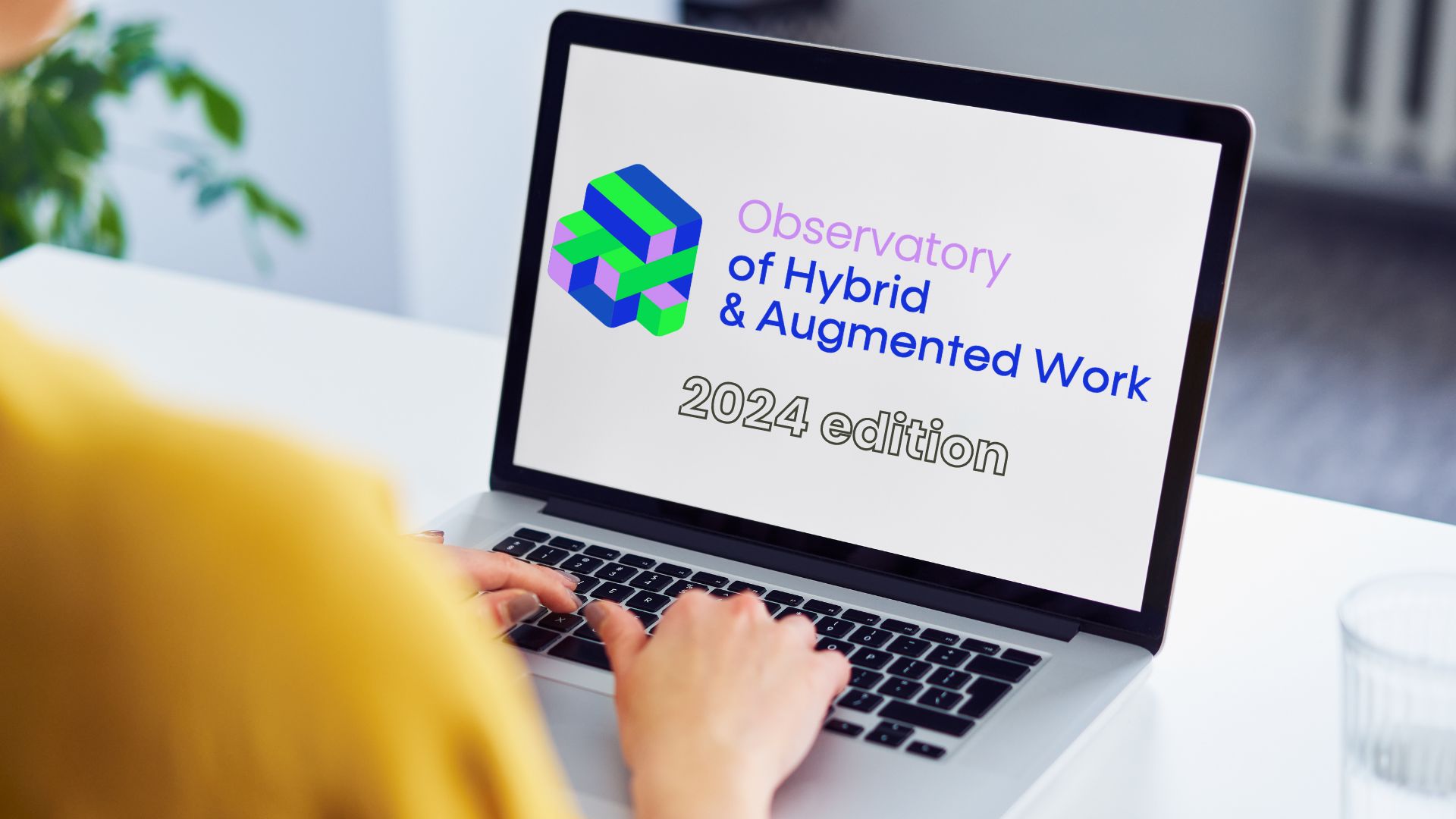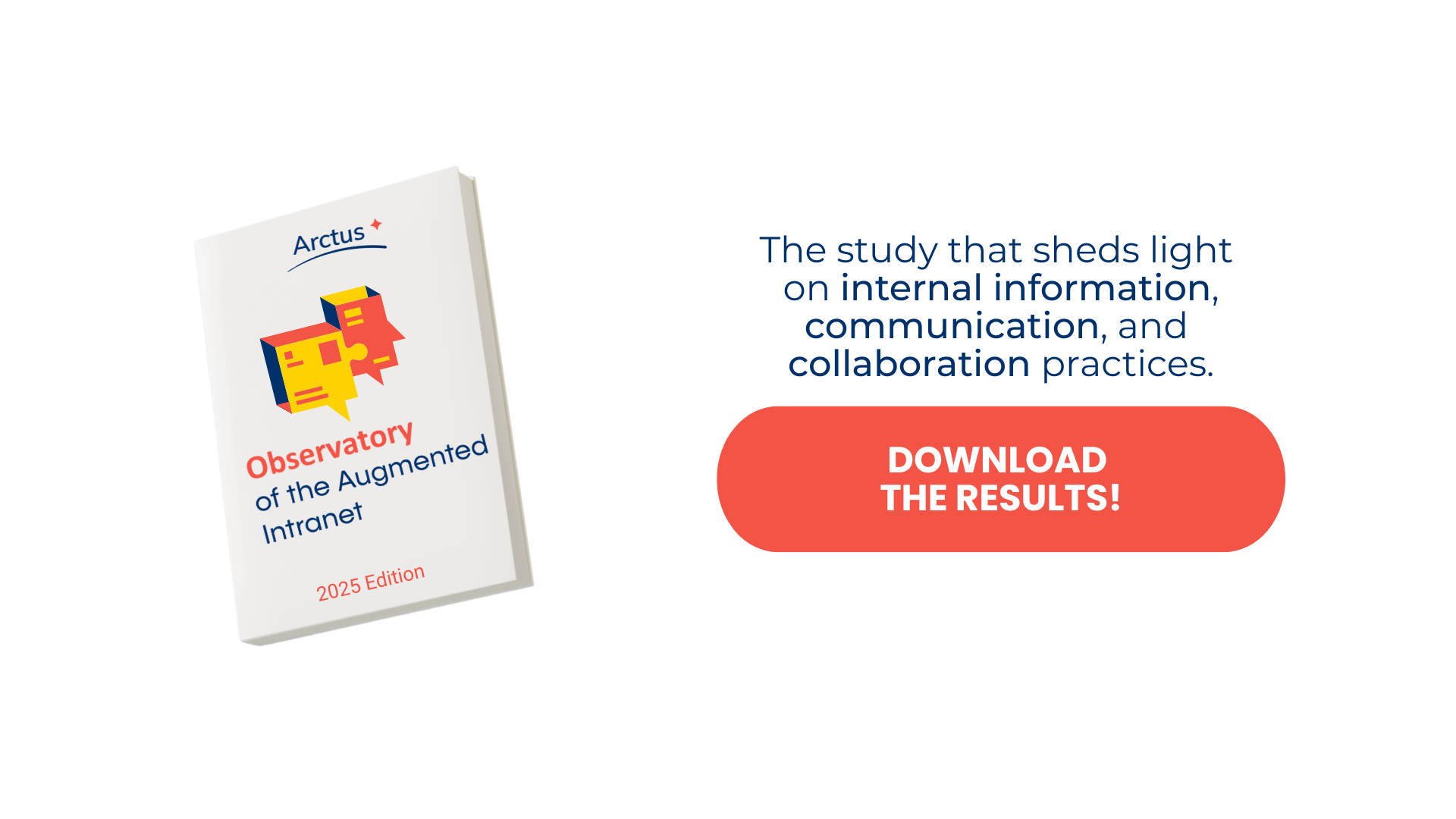THE 4 KEY FINDINGS OF THE 2024 HYBRID & AUGMENTED WORK OBSERVATORY

29 May 2024

The post-COVID upheavals have forced organizations to rethink their working methods, the role of managers, and the place of employees. Additionally, since early 2023, the rise of generative AI has further disrupted work environments.
This urgency to adapt takes the form of a "hybridization of work," which we consider as a disruption related to the balance between remote and on-site work. However, we now also extend this concept to include AI, a new form of work hybridization.
How are organizations adapting to the hybrid work model? Where do they stand in the deployment of generative AI tools? How is AI redefining professional practices? How are employees being supported?
This is what we aimed to understand in the 1st edition. 2024 Hybrid & Augmented Work Observatory.
Discover the key insights from the study to help you evolve your practices and adapt to current and upcoming transformations.
ABOUT THE Hybrid & Augmented Work OBSERVATORY
In 2022, we launched a new biennial Observatory: the Hybrid Work Observatory, a study that allows us to analyze the evolution of work environments from both a technological and human perspective (management in the digital age, change management).
In addition to the usual questions, we also examine:
- the stage of deployment of generative AI tools within organizations
- the professional uses of generative AI
- the actions implemented to support employees in using generative AI
- the perspectives of organizations regarding generative AI
What can we learn from this 2024 edition?
1. Teleworking: a significant Growth
Nearly one in two employees in our study panel works remotely one to two days a week.
Far from declining, remote work is increasing compared to our last measurement: 22% of respondents reported an increase in their average number of remote work days since 2022, while only 15% reported a decrease.
This trend contradicts recent statements about employees returning to the office, reflecting a tension between leaders' rhetoric and what is actually happening.

Remote work is primarily seen as a business continuity measure (61%), it promotes team autonomy (51%) and it is now clearly becoming a factor in company attractiveness (42%, an increase of 9%).
"The 2024 Observatory respondents are more frequent users of remote work than the national average. However, there is an increasing trend of companies that have shifted from zero to one day of remote work since 2022. We see both leaders who desire greater office presence and employees who cannot work remotely. There are initiatives to test the four-day work week, which is a way to compensate for the inability to work remotely, among other things."
Isabelle Reyre, Associate Director, Arctus
2. Hybrid work complicates team collaboration and the onboarding of new hires.
65% of respondents identify the the loss of team cohesion as the main risk of hybrid work, and 57% believe it hinders spontaneous interactions.
The complication of integrating new hires remains a significant concern in a hybrid context (53% of respondents).

These figures illustrate the growing importance of human management of teams compared to the mastery of digital tools (which is declining). Management plays a crucial role in reinventing team dynamics.
3. The technical conditions for hybrid work are in place, but management has not yet adapted.
83% of respondents are satisfied with hybrid working conditions.
Collaborative tools (video conferencing, chat, co-editing) are widely implemented (Microsoft 365 is used by 61% of respondents), as well as various applications (presence declaration, workflow, electronic signature).
The majority of employees (67%) have suitable equipment (tablets, laptops, etc.) to work efficiently from home.
30% of companies have invested in connectivity infrastructure and renovated premises and contribute to personal expenses.
Despite good technical conditions, the adaptation of managers to hybrid work is satisfactory in only one out of two companies (53%). This figure is low given the necessity to adapt to the new work organization.
To operate optimally in hybrid mode, a manager is expected to know how to delegate (55%), lead the team both in-person and remotely (51%) and facilitate social connections between team members, even at a distance (34%).
"Hybrid work only functions in the long term if we focus on creating and maintaining connections between employees, their managers, and the company. At Kaliop, each manager is provided with a budget to maintain this connection and organize moments of sharing throughout the year with the team, coupled with on-site visits. Managers are autonomous in using this budget and in choosing and organizing common activities, which can range from lunch to an escape game."
Xavier Bureau – Chairman of Kaliop
4. Generative AI: A New Dimension of Work Hybridization

Generative AI will play a prominent role in the future of work. 63% of respondents anticipate a frequent, if not daily, use of Generative AI in their professional practice within the next two years.
66% of companies have identified a sponsor for this transformation (with the CIO, Head of Innovation/R&D, and Head of Digital Transformation leading the way), and 50% have started awareness initiatives.
At the same time, the tools deployed by organizations are currently in their early stages. The priority uses are augmented search (23%), translation, office assistant functions, and text generation (15%).
The beginnings are certainly modest, but it should not be forgotten that these tools were introduced into professional daily life just a year ago.
LEARN MORE
For over 20 years, Arctus has been conducting studies to analyze internal digital transformation trends and assist decision-makers and project leaders in the evolution of their organizations.
Sharing experiences and cross-pollinating perspectives are important to us. In this regard, we publish annual prospective studies on the 'future of work' and the digital work environment.
METHODOLOGY OF THE HYBRID & AUGMENTED WORK OBSERVATORY
An online questionnaire was used to collect quantitative data. It consisted of about thirty questions aimed at all professionals, managers or not, whether they work remotely or not.
The survey was conducted from February 1 to April 15, 2024.
In addition, a dozen semi-structured interviews were conducted with professors and researchers, executives, HR directors, communication directors, real estate directors, and consultants, who agreed to share their perspectives on the future of work.
To discover the detailed results of the study, download the full report.
For a personalized presentation of the Observatory's findings, or to discuss your internal digital projects, contact us..


